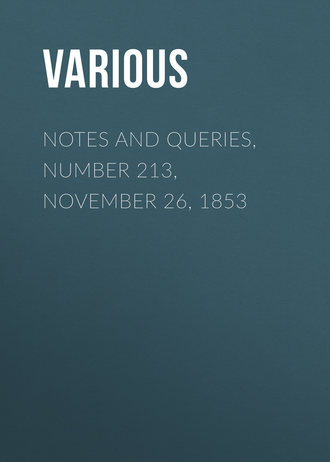Notes and Queries, Number 213, November 26, 1853
 полная версия
полная версияNotes and Queries, Number 213, November 26, 1853
Жанр: учебная и научная литературазарубежная старинная литературазарубежная образовательная литературазнания и навыки
Язык: Английский
Год издания: 2019
Добавлена:
Настройки чтения
Размер шрифта
Высота строк
Поля









